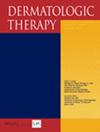Eczematous Eruption on Hands and Feet After Treatment With Biological Agents for Psoriasis
Abstract
Objective
To summarize and analyze the clinical diagnosis and patient management of immune drift in psoriasis.
Methods
Review the cases of psoriasis patients in the Peking University Third Hospital dermatology inpatient room from 2022 to 2023 and analyze three patients who developed eczema on hands and feet after treatment with biological agents. Review databases such as PubMed, Medline, and Embase databases to summarize the cases of immune drift induced by biological therapy for psoriasis reported in the literature.
Results
A total of 57 patients were included in the literature search combined with the 3 patients reported in this article for discussion. In previous studies, the biologics involved include the following: adalimumab (22 cases), infliximab (5 cases), etanercept (6 cases), ixekizumab (7 cases), secukinumab (10 cases), ustekinumab (15 cases), and guselkumab (3 cases). Among them, 8 patients experienced immune drift reactions to more than one biological agent. Among these patients, the proportion of male patients is 54%, and the proportion of female patients is 46%, with the age being (42.5 ± 24.5) years. The time from the initiation of biologic therapies to the onset of eczematous rash varies from 4 days to 22 months. The main manifestation included erythema, papules with exudation or scales, and the affected areas include the scalp, face, neck, trunk, and limbs. In previous studies, 47 patients reported laboratory indicators, of which 23 (48.9%) had elevated eosinophils and 9 (19.1%) had elevated IgE levels. A total of 10 patients reported biopsy results, all of which were consistent with eczema. Previous studies have reported 34 cases of treatment outcomes. Among them, 23 cases stopped using their original biologics and were changed to other types of biologics or small-molecule drugs, or treated with systemic glucocorticoids, cyclosporine, and methotrexate. In addition, 11 cases continued to use their previous biologics, of which 8 patients improved after topical glucocorticoids treatment and 3 cases did not receive any treatment and improved. Among the 3 patients reported in this article, 2 had elevated serum total IgE and 1 had elevated eosinophils. The three patients all stopped using previous biologics and improved after treatment with other types of biologics or systemic glucocorticoids and immunosuppressants.
Conclusions
Biologic therapy plays an important role in the treatment of psoriasis, but their paradoxical reactions, especially immune drift, are also worth our attention. In clinical decision-making for psoriasis, we should consider in advance whether the patient has atopic histories and can also use genetic tests to choose more suitable biologics for treatment.


 求助内容:
求助内容: 应助结果提醒方式:
应助结果提醒方式:


